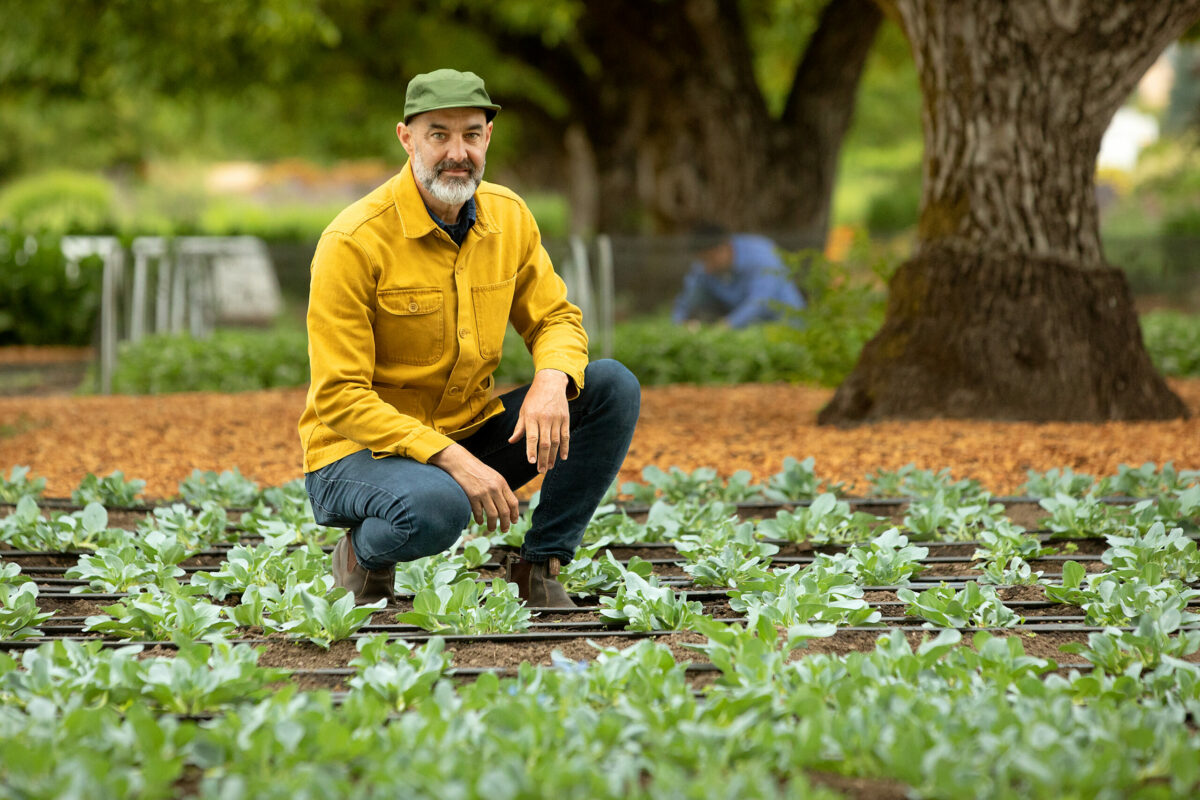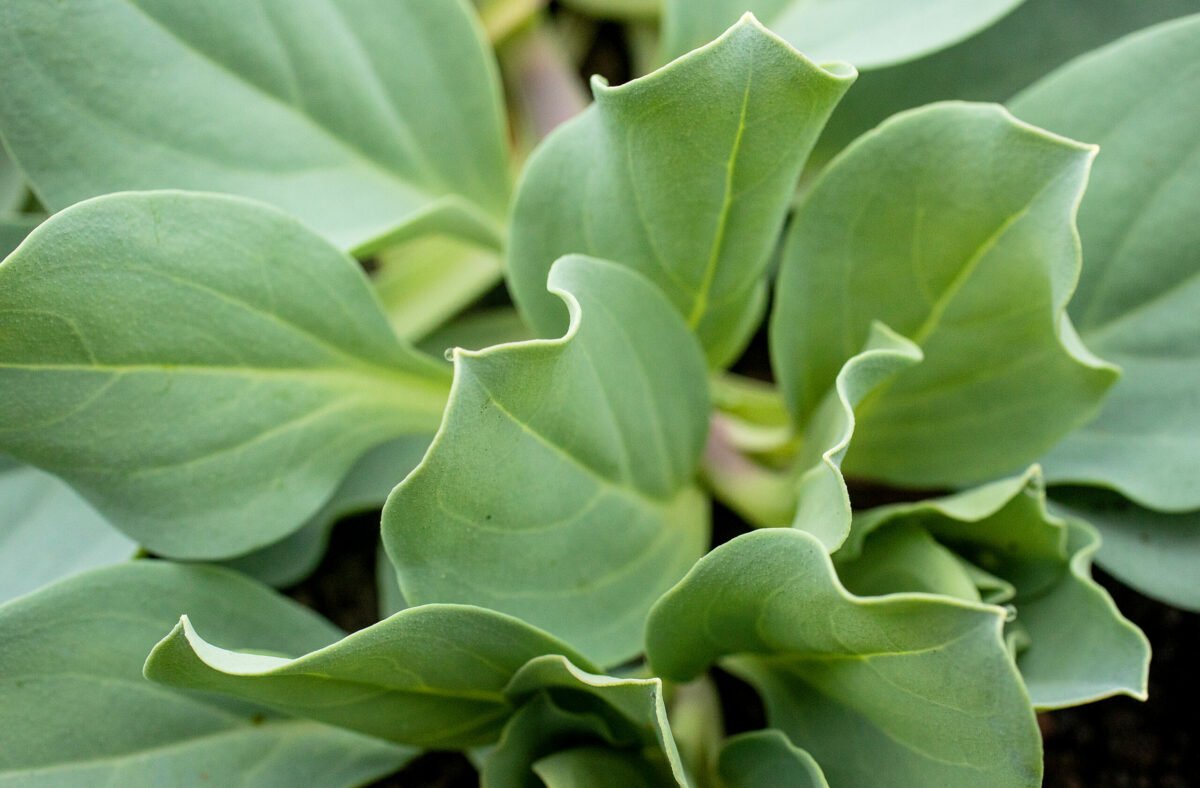Native to the wild, rocky shores of Scotland and Northern Ireland, Mertensia maritima — also known as the oyster plant — has a deep, salty secret.
Nibble one of its fleshy, succulent-like leaves and you’ll taste a distinct flavor of oysters. It’s a trait that’s not gone unnoticed by some of the world’s top chefs, who’ve found culinary gold in the plant.
Tucker Taylor, an esteemed master gardener and director of culinary gardens at Jackson Family Wines, remembers the first time he learned of the seaworthy plant. It was about 15 years ago, when he was overseeing the culinary gardens at the French Laundry restaurant in Yountville.
“I received a text from chef Thomas Keller, who was in Lyon, France, at the time,” Taylor said. “He was raving about these oyster-flavored leaves he’d tasted and sent me a photo.”
After figuring out the botanical name of the plant — Mertensia maritima — Taylor ordered the seeds from a French website.
“I don’t speak French, so that was quite a challenge,” said Taylor, smiling. “But I’ve been growing the plants ever since.”
Oyster leaf — also known as oyster plant, seaside bluebells and sea lungwort — is a member of the Boraginaceae family, which includes borage, forget-me-nots, comfrey, heliotrope, bluebells and other flowering plants.
A perennial herb native to the British Isles, where it’s now found primarily in north Scotland and Northern Ireland, the oyster plant also grows in parts of Greenland and Scandinavia and in New England on the rocky shores of Massachusetts, Maine and Vermont.
Growing in low mounds with silvery, blue-green leaves that trail over the ground, the oyster plant produces bright bluebell-like flowers at the tips of its wandering stems.
In the culinary garden at Kendall-Jackson winery, neat rows of oyster plants are grown between the walnut trees, which give them respite from the hot afternoon sun. While they typically thrive in cooler habitats, Taylor said, the plant grows well under moderate temperatures like those in Santa Rosa.
A taste of the sea
Whether it’s grown on the steps of the sea or in a Sonoma County garden, the fleshy leaves of the oyster plant really do recall the taste and texture of its namesake bivalve. They’re curious and briny, with a viscous quality some may find appealing.
To Michelin-starred chefs throughout the Bay Area, however, the oyster plant tastes like gold. That’s why they turn to Taylor to source the rare delicacy.
“In the beginning, I went out on a limb and sold the leaves for $1 apiece,” Taylor said. “We were making $1,000 a week just on oyster leaves. Now we sell them for 50 cents apiece because the seeds are now sold domestically and more farmers are growing them.”
That doesn’t mean oyster leaves are easy to find. Taylor said he has a waiting list of chefs eager to buy them.
Currently, Taylor supplies the leaves to two dozen restaurants in the Bay Area that have a combined total of 30 Michelin stars. With three additional greenhouses scheduled to be built on the Kendall-Jackson property, he hopes to have the growing space to supply an additional dozen restaurants.
As for how chefs are using oyster leaf on their menus, Taylor said the leaves are typically served fresh, although they also can be cooked to mellow their flavor.
“I’ve had oyster leaf topped with a dollop of crème fraîche and a spoonful of caviar, which really enhanced the flavor of the leaves,” Taylor said. “But I’ve also had it incorporated into a pasta dish, and it was really delicious.”
Those pining for a taste of the curious leaves can sample them on Kendall-Jackson’s Seasonal Garden Tour and Tasting, where they’re brushed with a shallot-infused mignonette gel to mimic the taste of a fresh oyster. They’re also served as part of a crudité cone alongside other freshly picked treasures.
A plot to plant creativity
Oyster plant is just one of the uncommon delicacies Taylor grows in the 4-acre culinary garden at Kendall-Jackson. Other items of intrigue include ice lettuce from Africa, celtuce from China, Asian crosnes, Japanese radishes and 10 varieties of mint — like strawberry, orange, pineapple and chocolate. And that’s just the beginning.
As for why he’s passionate about growing rare produce, Taylor said it’s his way to play a part in the creative culinary process.
“Chefs are in the business of entertaining guests, and I like to think of myself as entertaining chefs,” Taylor said. “I try to share their mindset — how is something going to read on a menu, or the different colors, flavors and textures of a particular dish. I’m growing the colors for the chefs to paint with. I’ve always geeked out on that collaboration.”
You can reach Staff Writer Sarah Doyle at 707-521-5478 or sarah.doyle@pressdemocrat.com. On Twitter @whiskymuse.















